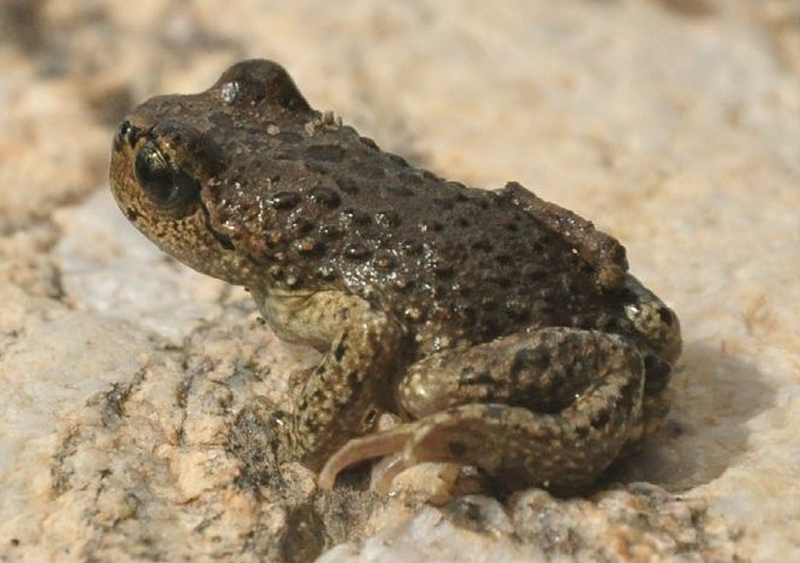Frogs of a Stressor Evolve Together
By Michael Lim
28 June 2019

Mount Everest is not only famous for the fantastic view from its nearly 9,000 metre peak, but the difficult conditions one must survive to reach the top. High altitude environments pose challenges to living organisms with low temperatures, low oxygen levels, and high ultraviolet (UV) radiation levels. Conditions can vary dramatically across seasons, and even between night and day. In the face of these extreme conditions, very few species can survive for long periods of time. Some of these rare creatures include one surprising group of animals: frogs! At 4,000 metres above sea level, a height that would leave most humans dizzy and nauseous, several species of frogs can be found hopping their way across mountains, swimming and spawning in near-freezing water.
“A lot of amazing things happen at high elevation,” says Prof. Jinzhong Fu, Department of Integrative Biology. “The sight of hundreds of frogs hopping around at a height that would cause most humans issues…you just know they have to be doing something right!”
With several species of frogs not just surviving but thriving at these dizzying heights, Fu wanted to uncover if these different species adapted to high altitude via the same evolutionary path.
Throughout history, organisms have evolved an astounding number and variety of ways to survive challenging environmental conditions or stressors. These abilities arise through the process of natural selection, where random genetic mutations may provide an adaptive trait, benefitting individuals with increased survival and allowing them to produce more offspring. These mutations can be inherited by their offspring, becoming part of the species’ genetic make-up.
When unrelated species are confronted by similar stressors, they may independently develop similar adaptive traits. This process is called “parallel evolution”, a phenomenon most commonly recognized in different animals that share similar physical traits; for example, birds, insects, and bats all evolved the ability to fly separately. But parallel evolution can also occur at the molecular level, which involves small changes in the nucleotide sequence of DNA that lead to changes in the function of the proteins they encode. In this way, even tiny alterations at the DNA level can lead to important functional adaptations in an organism.
Most biologists consider molecular parallel evolution to be relatively rare. This is because of a concept known as “functional redundancy”. Possibly to protect organisms from harmful mutations, different changes to a DNA sequence can result in the same protein structure being created. In other words, there are multiple paths that can lead to the same change in protein function. This means that different species facing the same stressor may evolve similar solutions at the level of proteins or even the whole organism, but are unlikely to evolve the exact same change in DNA sequence.
However, according to Fu, frogs living at high altitudes may present a strong case for molecular parallel evolution. And it all comes down to a group of very important proteins known as heat shock proteins (HSPs) that play a key role in survival at high altitudes.
HSPs are small proteins that help to stabilize and regulate the function of other proteins when cells are exposed to stress. Although these proteins were originally associated solely with heat stress, increased levels of HSPs have since been found to protect organisms from many other stressors including low levels of oxygen and high levels of UV radiation. There are many different types of HSPs, so Fu focused on HSP90α, one of the most commonly found across species.
Working with collaborators Hong Jin and Bin Lu from the Chinese Academy of Sciences, Fu compared the gene sequence for HSP90α in nine species of frogs: four from high altitude areas and five from low altitude areas. What made the team’s approach particularly interesting was that their analysis focused on comparing transcriptomes. Unlike the genome, which contains all DNA nucleotide sequences, the transcriptome is made up of RNA sequences that have been transcribed from the DNA sequence, which can then be used to create proteins. Studies focusing on solely transcriptomes are known to have some limitations, but they can be accomplished hundreds of times faster, at roughly a thousandth of the cost.
By contrasting differences in the transcribed HSP90α gene between high and low-altitude species, Fu and colleagues were able to identify 16 sites in the HSP90α transcriptome sequence that had undergone similar changes in two of the four high altitude species – far more than could have occurred by chance alone. From an evolutionary genetics standpoint, this finding offers exciting evidence for parallel evolution between the two species! Fu next plans to conduct a full genome analysis to confirm if these sequences are truly an example of molecular parallel evolution.
Still fascinated by these frogs, Fu plans to continue his studies on high altitude adaptations by examining heart size, heart function, and behavioral differences between high and low-altitude populations. As Fu currently spends most of his time analyzing data and developing models in the lab, the opportunity to study different aspects of these high altitude champs has brought back
“Although I’m more of a lab-dwelling naturalist now, I used to do a lot of field work,” says Fu. “I’ve always liked these animals, so it was exciting to feel like ‘I’m going back!’.”
Funding for this research came from the National Nature Science Foundation of China and the Natural Sciences and Engineering Research Council of Canada.
Read the full article in the journal Asian Herpetological Research.
Read about other CBS Research Highlights.